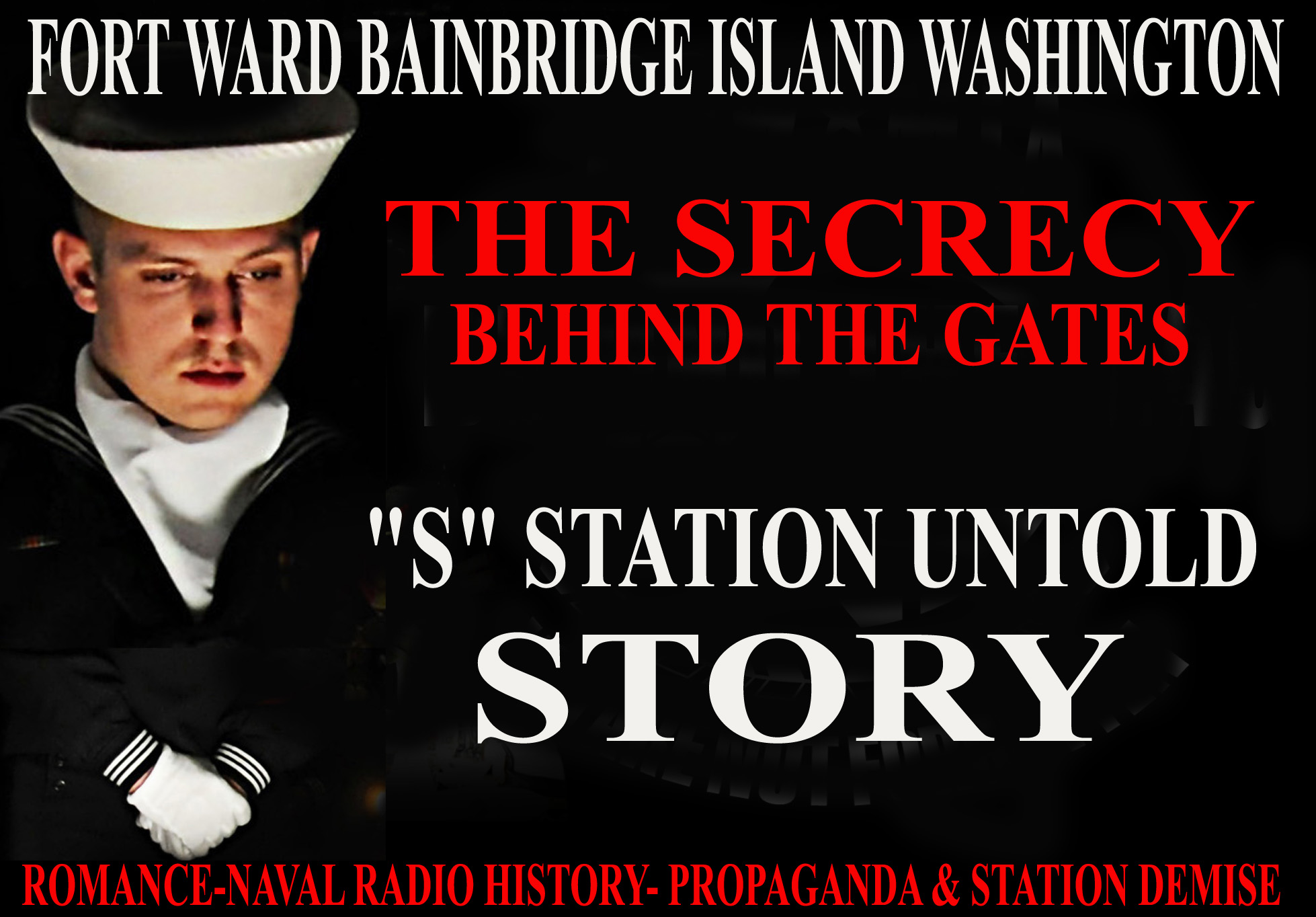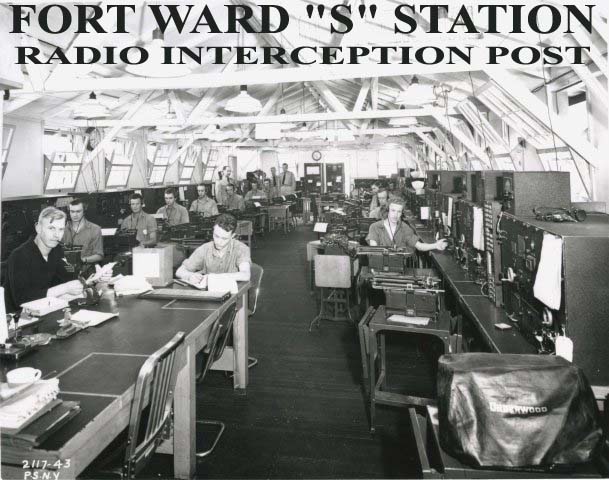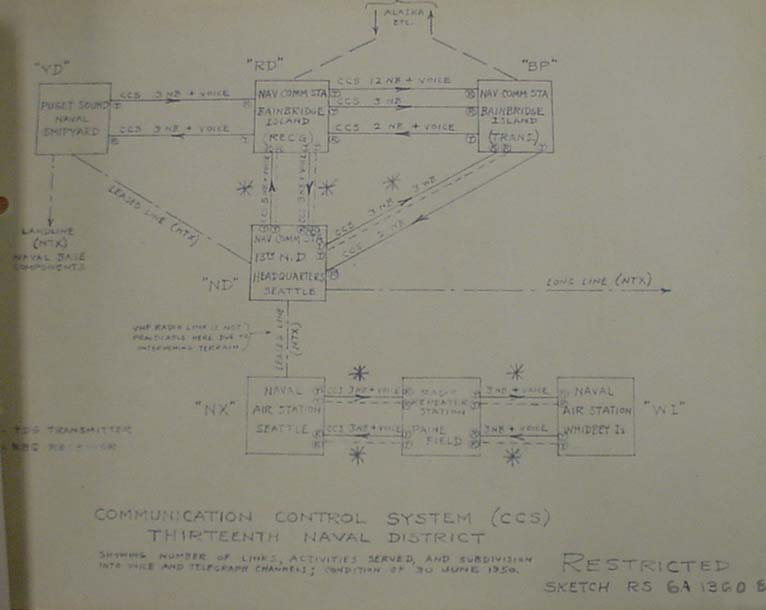
|

United States Army Signal Corps Mission: Support for the command and control of combined arms forces. Signal support includes Network Operations toward information assurance, information dissemination management, and network management, including management of the electromagnetic spectrum. Signal support encompasses all aspects of designing, installing, data communications networks that employ single and multi-channel satellite, tropospheric scatter, terrestrial microwave, switching, messaging, video-teleconferencing, visual information, and other related systems. They integrate tactical, strategic and sustaining base communications, information processing and management systems into a seamless global information network that supports knowledge dominance for Army, joint and coalition operations.
Office of Chief Of Naval Operations, was the United States Navy's signals intelligence and crypt analysis group during World War II. Its mission was to intercept, decrypt, and analyze naval communications from Japanese, German, and Italian Navies. The major effort were directed towards Japan, to breaking the early Japanese “Blue” book fleet code. Thereby, making possible to intercept and with High Frequency Direction Finder sites in the Pacific, Atlantic, and continental United States, including a Japanese telegraphic code school for radio operators in Washington, DC.
Baibridge Island Naval Communication Station WWII Naval Activities:
Supplementary Operational Station School,
Supplementary Station Direction Finder/DF School,
Supplementary Training School for Specialized Radio Interception,
Supplementary Naval 13th District Puget Sound Radio Communication,
Secret Naval Intelligence Radio Activities,
Radio Signal Intercept Post,
Radio Direction Finding Post,
Pacific Fleet Communications,
Naval Radio Transmitting Battle Point Station Staffing,
Rich Passage "Naval Mancester Ant-Submarine Net Depot Anchor",
Rich Passage Naval Marine Traffic Radio Contol Tower,
Not Limitied to WWII Naval Station Acitivities.

Baibridge Island Naval Communication Station WWII Naval Interception Activities:
On Oct. 27, 1941, Fort Ward incetercepted a Japanese Agent "Sato" Radio Communication, sent from Seattle, Washington, describing warship being repaired at Bremerton, Washington, Puget Sound Naval Shipyard.
On Nov. 19, 1941, 'S" Station intercepted Japanese plans for the famous “winds” code in which a weather forecast would signal the end of diplomatic relations.
Then at 1:28am PST December 7, 1941, the last of a series of 14 messages being sent over the previous 18 hours was intercepted by the "United States Navy Communications Intercept Station" at Fort Ward, Bainbridge Island, Washington, a radio message by the Japanese government directed to the Japanese ambassador in Washington, DC. This significant Japanese radio message presented Fort Word Naval Radio Station a place in WWII History and Historical Naval Landmark.

|
Baibridge Island Naval Communication Station WWII Naval Intelligence Activities:
At Fort Ward Naval Intelligence by 1:37am PST a dispatch was forwarded by RTTY/Radio teletype to Washington, DC, at 11:30am EST, General George C. Marshall, Army chief of staff instantly recognized the code as “purple,” the Japanesse cryptographic system. During this time the Japanese Navy Aircraft Carriers launched aircraft were in flight 200 miles north of Pearl Harbor. Marshall dispatched an alert to Pearl Harbor, Honolulu, Hawaii warning of the Japanese raid due time at 7:30am, HST reached Pearl Harbor Naval Communication Center at 7:33am HST, which was not immediately delivered to Pearl Harbor Commanders.
|
|


United States National Archives
United States Department of Navy
United States Army Signal Corps
Office of Naval Intelligence
Jean Leonie Calliet Alloin Hoffman, Narratives
Seattle Post Inteligencer Photography Archives
Seattle Museum Of History and Industry Research Archives
Fort Lewis Army Museum History
Lewis Army Museum
National Museum of the United States Navy
Seabee Museum and Memorial Park
Naval History and Heritage Command

|
ISLAND LIFE WITH THE NAVY
Bainbridge Island, in the pre war years, was primarily isolated rural agriculture community and 2 major lumber mils at Port Madison and Port Blakley, inducing a ship yard in Eagle Harbor and hosting an Amry Coastal Artillery Defense Base till 1927.
However, During 1935-1938, with possibility of world war, the United States Navy, having knowledge of the strategic location of the Bainbridge Island, Washington Army Artillery Base, in Puget Sound, began testing for radio communication site suitable for a radio communications listening post for the Pacific Ocean and local naval station radio traffic for fleet operations and intelligent reports onJapanesee Radio Frequencies.
In 1938 Addition Property was acquired at Battle Point for a Transmitter Tower Station and Navel acquired Fort Ward from the Army Coast Artillery Defense, with additional property to expanded the naval communications station for radio recieving building and towers at a cost of $3,190,104.00

|
|
![[Email Us]](http://www.atdlines.com/images/mailbutn.gif)
![Power By ETS]](http://www.atdlines.com/motion/tower-1.gif)
